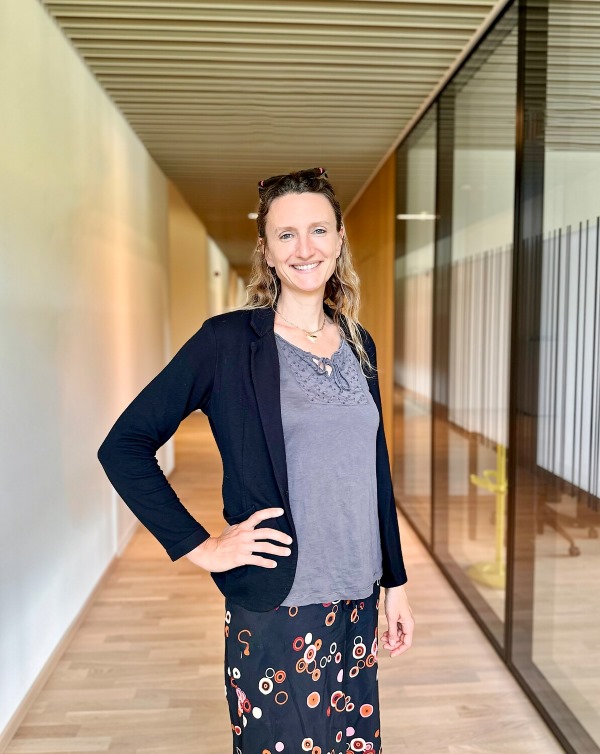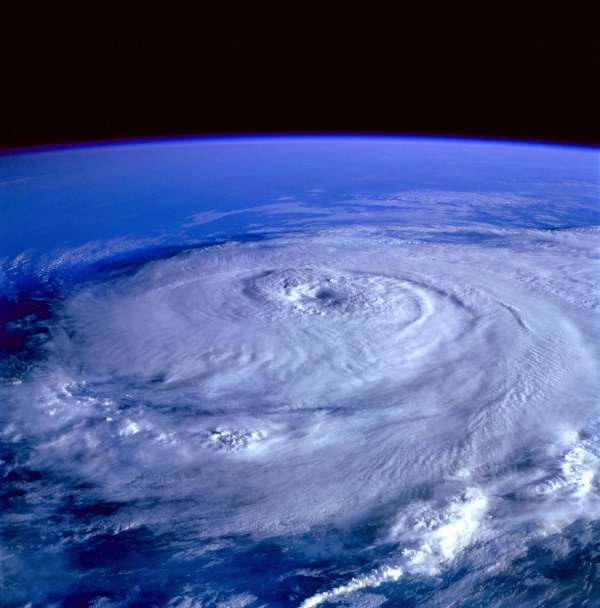August 1, 2024
Wind, Water, and an Ever-Changing Climate
Atmosphere, ocean, and climate researcher Caroline Muller promoted to professor
Caroline Muller, one of the first climate researchers to join the Institute of Science and Technology Austria (ISTA) in 2021, was promoted to full professor. In this interview, she discusses what dolphins have to do with her fascination for clouds, the latest advancements in climate research, and how the record-high sea surface temperatures might affect the imminent switch to the weather phenomenon La Niña this summer.

Originally you wanted to become an astronaut. Now, you observe clouds with the help of data from space. What makes them so fascinating to you?
The thought that we, i.e., humankind, can go to the moon, but still don’t fully understand how a cloud works or what lies lurking at the bottom of our oceans triggered my scientific curiosity. In addition, natural phenomena like how dolphins form air rings fascinated me with fluid dynamics. To put things into perspective, we are surrounded by fluids starting from the air we breathe. When clouds form, they show us the fluid movements of the atmosphere in an exquisitely subtle way. Thus, I eventually decided to go into geophysical fluid dynamics during my PhD.
Our rapidly warming climate has a major impact on your field of interest. Was that also a reason why you eventually turned to climate research after Aerospace Engineering School?
The link to climate change was indirect. Initially, I felt drawn to understand the physical processes behind this global phenomenon. But eventually, I was also affected by the societal impact of climate change, such as changes in the precipitation patterns in the Mediterranean region and the Iberian Peninsula. Experiencing such phenomena firsthand as scientists makes our work more personal. We see that our research has the potential to make a change that impacts lives.
What are some of the major recent developments in climate research?
As the climate field evolves, our needs for understanding it are shifting. Our research areas are highly dynamic, and we must always ask and answer new questions. For example, climate modelers are increasingly aware of their models’ limitations and uncertainties. Our role as researchers interested in the physical processes underlying climate phenomena is to examine the fundamental physics and feedback to climate modelers.

We can now connect a large meshwork of ‘global storm-resolving models’ (GSRMs) with higher spatial resolution, even though they remain computationally expensive. By doing so, we identify physical parameters under very local conditions and fill the data loopholes on a global mesh of better locally defined parameters. Ultimately, this allows us to single out the factors that could have a global impact.
In your work, you explore various topics such as liquid clouds, the formation of aerosols, dust charging, and the electricity of lightning. What question is on your mind right now?
The biggest change I’ve experienced, scientifically speaking, was moving to ISTA and integrating a new community of researchers with highly diverse fields of expertise. Being one of the first geoscientists at the Institute allowed me to start collaborations in areas I did not envision initially. My research in the Southern Ocean began when I joined ISTA in 2021. Together with my PhD student Sima Dogan, we study how the Southern Ocean around Antarctica ventilates the Pacific and Atlantic waters. I often find simple questions mind-blowing from a physical point of view. For example, the Antarctic Circumpolar Current is mainly wind-driven. With stronger winds, one would expect the current to increase its velocity. But, instead, we observe increased ocean eddies. Thus, I want to investigate how much energy goes into accelerating the current and how much into eddying.
Speaking of oceans and strong winds: In June, the World Meteorological Organization announced the end of the climate phenomenon El Niño and an imminent switch to the opposite effect, La Niña. How will this affect the weather in Europe?
The natural phenomenon of El Niño causes global temperatures to rise. El Niño and La Niña phases follow one another in a natural oscillation that causes significant variations in our planet’s climate system. El Niño warms the equatorial Pacific, pulling up global temperatures. La Niña, on the other hand, leads to cooling. When, and how fast the coming La Niña phase will develop is still unclear. Its cooling effect may temporarily and slightly slow the rate of global warming. But sadly, the end of El Niño does not mean a pause in the long-term global warming induced by increased greenhouse gases from human activity.

What could this change mean for tropical cyclones, one of your research interests, in the context of the record-breaking sea surface temperatures for over a year?
El Niño favors tropical cyclones in the Eastern Pacific but decreases their number in the Atlantic. La Niña, on the other hand, does the opposite. Tropical cyclones are highly sensitive to the sea-surface temperature as most of their energy comes from surface evaporation from the ocean and evaporation increases with temperature. At this point, it is too early to predict whether the next La Niña will lead to more violent cyclones in the Atlantic.
Moving away from cyclone landfalls, which scientific shores are you sailing to in the coming years?
I am driven by a deep sense of scientific curiosity and all the scientific puzzles I want to solve. We’re certainly moving toward more simplified models focusing on the crucial parameters that can explain natural phenomena and predict them robustly. For example, considering that the temperature in the troposphere–the lowest atmosphere layer that contains most clouds–decreases steadily with height, we could ask how a cloud population behaves under simple temperature profiles in simulations. Do they aggregate like in cyclones or do they form separately? We should keep in mind that tropical cyclones do not only affect the tropics but also various climate zones. After all, our atmosphere is the same fluid all over the planet; it is only affected by different parameters locally. Thus, what happens in the tropics doesn’t stay in the tropics. Our climate is global and requires global solutions.
I am excited to evolve, adapt, take scientific risks, and start more collaborations. Studying Earth is a highly multidisciplinary endeavor, and my group is happy to engage with researchers from all areas of expertise. To all scientists out there interested in our research: don’t hesitate to reach out to us!



